Text
sadness
#macriley#macgyver#mac x riley#my edit#macgyveredit#macgyver x riley#angus macgyver#riley davis#video edit
13 notes
·
View notes
Text
working on the plot: 🚫🙈🤢🙅
working on tiny worldbuilding/character details that probably won’t even make it into the story: 👌😍💯👁️
49K notes
·
View notes
Text
Ways to un-stick a stuck story
Do an outline, whatever way works best. Get yourself out of the word soup and know where the story is headed.
Conflicts and obstacles. Hurt the protagonist, put things in their way, this keeps the story interesting. An easy journey makes the story boring and boring is hard to write.
Change the POV. Sometimes all it takes to untangle a knotted story is to look at it through different eyes, be it through the sidekick, the antagonist, a minor character, whatever.
Know the characters. You can’t write a story if the characters are strangers to you. Know their likes, dislikes, fears, and most importantly, their motivation. This makes the path clearer.
Fill in holes. Writing doesn’t have to be linear; you can always go back and fill in plotholes, and add content and context.
Have flashbacks, hallucinations, dream sequences or foreshadowing events. These stir the story up, deviations from the expected course add a feeling of urgency and uncertainty to the narrative.
Introduce a new mystery. If there’s something that just doesn’t add up, a big question mark, the story becomes more compelling. Beware: this can also cause you to sink further into the mire.
Take something from your protagonist. A weapon, asset, ally or loved one. Force him to operate without it, it can reinvigorate a stale story.
Twists and betrayal. Maybe someone isn’t who they say they are or the protagonist is betrayed by someone he thought he could trust. This can shake the story up and get it rolling again.
Secrets. If someone has a deep, dark secret that they’re forced to lie about, it’s a good way to stir up some fresh conflict. New lies to cover up the old ones, the secret being revealed, and all the resulting chaos.
Kill someone. Make a character death that is productive to the plot, but not “just because”. If done well, it affects all the characters, stirs up the story and gets it moving.
Ill-advised character actions. Tension is created when a character we love does something we hate. Identify the thing the readers don’t want to happen, then engineer it so it happens worse than they imagined.
Create cliff-hangers. Keep the readers’ attention by putting the characters into new problems and make them wait for you to write your way out of it. This challenge can really bring out your creativity.
Raise the stakes. Make the consequences of failure worse, make the journey harder. Suddenly the protagonist’s goal is more than he expected, or he has to make an important choice.
Make the hero active. You can’t always wait for external influences on the characters, sometimes you have to make the hero take actions himself. Not necessarily to be successful, but active and complicit in the narrative.
Different threat levels. Make the conflicts on a physical level (“I’m about to be killed by a demon”), an emotional level (“But that demon was my true love”) and a philosophical level (“If I’m forced to kill my true love before they kill me, how can love ever succeed in the face of evil?”).
Figure out an ending. If you know where the story is going to end, it helps get the ball rolling towards that end, even if it’s not the same ending that you actually end up writing.
What if? What if the hero kills the antagonist now, gets captured, or goes insane? When you write down different questions like these, the answer to how to continue the story will present itself.
Start fresh or skip ahead. Delete the last five thousand words and try again. It’s terrifying at first, but frees you up for a fresh start to find a proper path. Or you can skip the part that’s putting you on edge – forget about that fidgety crap, you can do it later – and write the next scene. Whatever was in-between will come with time.
135K notes
·
View notes
Photo

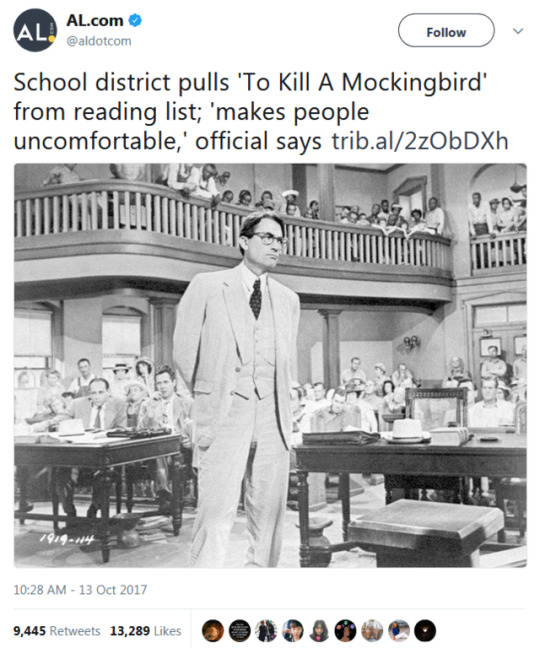


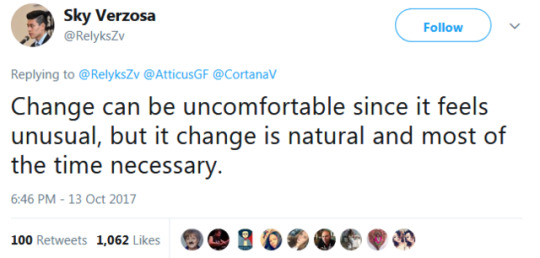




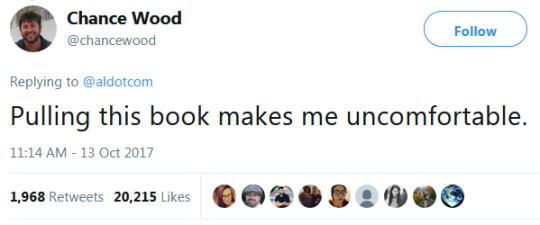
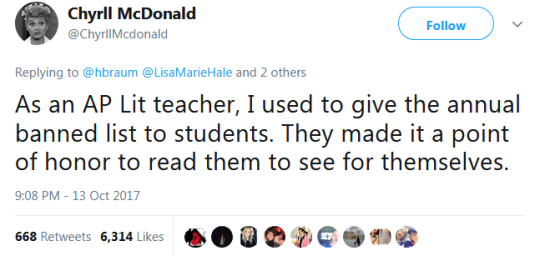
The sign of high quality is the fact the book was banned by the government. Trash literature NEVER EVER had any troubles with the law.
440K notes
·
View notes
Text
writing is hard because sometimes you want to write a sentence that is pleasant and rhythmic and compelling to read and sometimes you just want to get the characters across a damn room
25K notes
·
View notes
Text
Something that was really hard for me and I’m sure will be hard for many other privileged writers to accept is that if you aren’t good at diversifying your characters now, it won’t happen on its own.
I’ve been there. A cishet white cast seems perfectly natural to me because I grew up in a cishet white world. And therefore, I’m not great at adding non-cishet white characters. But the longer I sat there waiting for it to happen, the longer I stewed in my biases.
It gets easier, the more you do it. One gay character may lead to his boyfriend. One black character may lead to her brother. And then, next time you go about writing your story, maybe that character just happens to be Latinx without intentionally crafting them that way. Maybe you character is nonbinary and you didn’t give it a second thought while putting it down on the character creation sheet; maybe you don’t even know whether they were AFAB or AMAB.
But if you sit there with your cishet white cast, you’re going to create more cishet white characters. I’ve been there. You can blame the world you grew up in for making your first instinct to create cishet white characters, but you can’t blame it for not changing that.
We hear a lot, “Don’t add forced diversity!” But that’s bullshit. Because if you don’t force diversity into your story, it won’t happen on its own.
Similarly, if you you suck at it the first time, it’ll be easier the second time. If you accidentally write a character who’s a flat representation of stereotypes? The only things you can do are apologize and fix it or move on to your next magnum opus. It’ll be easier to avoid that next time, and if you make a mistake then, you can avoid that one too after that.
But the longer you wait to change yourself, the harder it will become. The more drafts you are into a story, the harder it is to add new characters or change existing characters.
I have been there. And I am with you. But you can only move forward; it’s up to you if you choose the high road or not.
201 notes
·
View notes
Text
one of the best pieces of writing advice i’ve ever gotten:
if a scene isn’t working, change the weather.
it sounds stupid, but seriously, it works. thank u to my screenwriting professor for this wisdom
30K notes
·
View notes
Photo

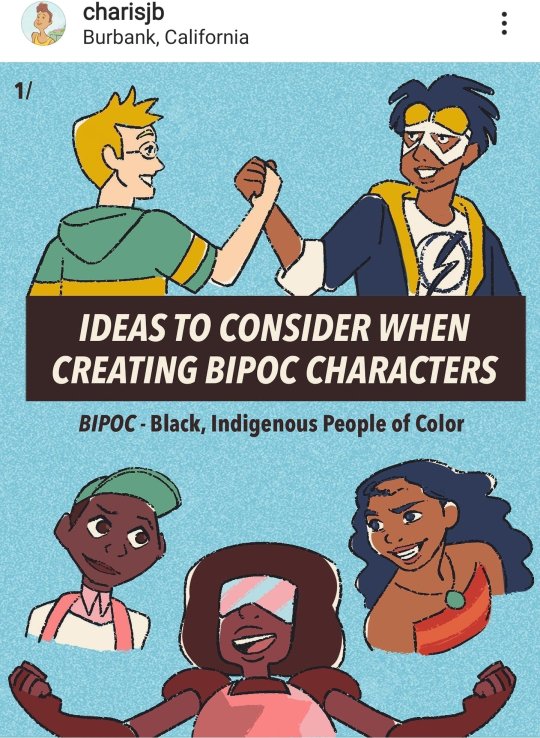
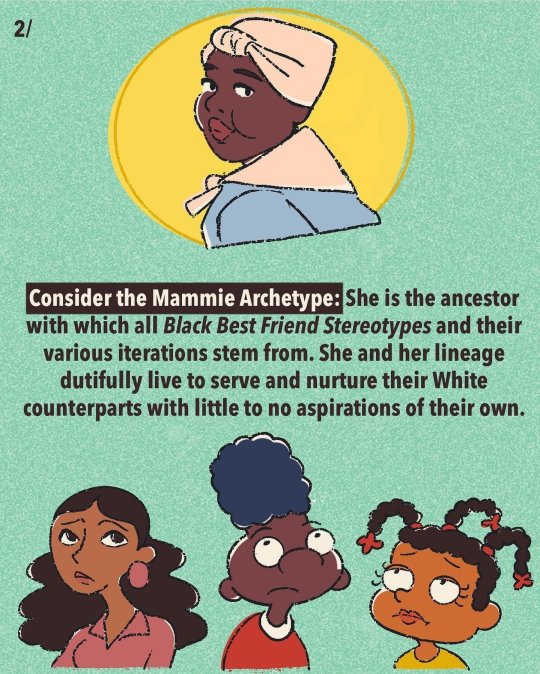


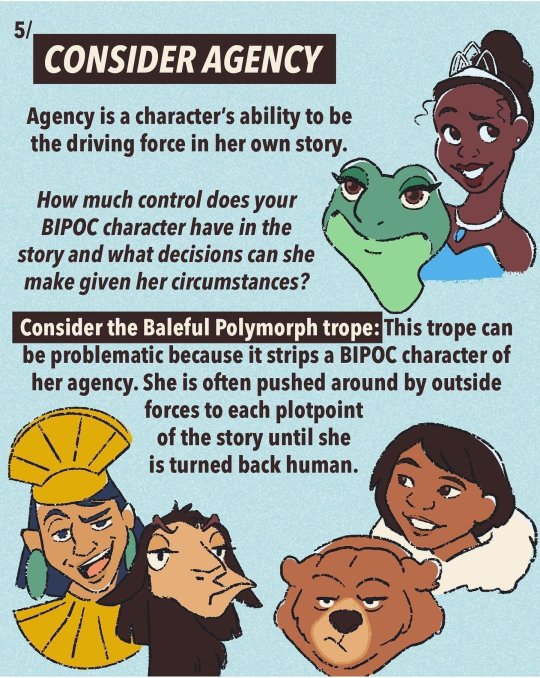


Important ideas to consider when creating characters who are black and indigenous people of color. (x) (Creator’s instagram post)
188K notes
·
View notes
Text
Forget the question of...
"is Azula truly evil?"
"Is she sympathetic?"
And focus on...
"is she compelling?"
"Is she well-written?"
26K notes
·
View notes
Text
I think a big part of why I read way more fanfiction than books is that there’s just a hell of a lot less exposition
the first 10 pages of most books are always “these are the main characters and here’s some background on each of them and this is the setting etc etc” and it’s such a fucking hassle getting to the plot sometimes
fanfic is just like “fuck it you know all of this already let’s go”
308K notes
·
View notes
Text
Creating an army
For the needs of Rising Queens, I had to create an army. Since I’m an accountant and have never served in the military nor lived sometime between 1650 and 1820… I knew nothing about how to do that, so I researched, not a lot, but enough I think to give some tips and directions to anyone planning to do the same crazy thing.
Let’s get started. Please note this is for fantasy writers, a number of elements do not apply to modern or futuristic armies. (words with a * are translated in French at the end, because I’m a little chauvinist)
1. How big is your army ?
So, if your army is a professional army, in clear if soldiers are soldiers all year long and paid for it, the size of your army is limited. Mostly because resources are not infinite, and your army depends on the rest of the population to be fed. This rule would also apply for mercenaries, as your nation must still be able to pay them.
In consequence, its size should not be more than 1% of the population. This number was true in the past, and is still true today. And 1% is the upper limit, it assumes your nation is able to collect taxes efficiently!! If it’s not, your army must be smaller, or your nation will go bankrupt.
If your army is not professional, then the problem is a little different: your soldiers are no longer working all year long. The question is how big can your army be during x time? The longer the war/conflict lasts, the smaller your army will be, as your resources are limited and you need people to tend to the land. Or you can have a big starving army, your choice (or a starving population… or both…). After some research, it happens that number is 7% of the population for a period of 90 days (which was the length of a campaign season).
2. Support
So, yes, your soldiers are soldiering, or at least a part of them is… the rest is working as support, they are the spine of your army, without them everything could crumble. Without them you don’t have supplies, or meals, or doctors, or clothes, or payslips or…
Among the various support departments in military, we will first start with one that probably was the biggest: Supplies (aka Furir*). They originally were in charge of housing and food for men and animals, but over time they came to be in charge of all supplies, including their logistics. In the French Navy, they once were in charge of payslips. Without them, you don’t have food, but you also don’t have uniforms, weapons, or munitions…
While we are here, let’s note that most armies, while away from home, survived through plunder of the land around them. Which is great if you’re not staying in the same place too long, and if your enemy does not decide to burn everything left behind. Mercenaries, who were not paid by their employer, also plundered the land of their employer as a form of revenge.
The Postal Service* is like a web, they have a presence everywhere in the military organisation (including schools, jails, navy…). Not only do they make sure the letters are sent to the right person, but they also take care of censoring the letters of the soldiers. This is a job that require discretion as you might end up in the confidence of secrets that do not concern you nor the public.
The War Commissaries* are in charge of the administration of the army, which includes: finances, human resources, audit and control, law assistance, accounting. In some cases, Furir and Postal Services are also incorporated under their supervision.
One of the support functions we probably don’t think much about are the surgeons. Doctors, especially, surgeons were a priority on a battlefield. Mostly they acted after the battle, but they also took care of the soldiers all year long in a professional army. Military hospitals were created, some of them were used as medical schools too, and not all of them were situated in a military base. I haven’t been able to find if any ancient military hospital was opened to the public, but I personally don’t see why not. Generally each company (about 100 men) had one surgeon.
I will not discuss soldier being soldier, if you want more information on this, I will leave some links at the end of this article, please refer to it.
3. Army or Not ?
Some people, depending of your organisation, of your country, may be considered part of your army, even though their role is unrelated to the protection of the country against foreign forces, such as: police, spies, customs…
It really depends on how you see your organisation as a whole, and also who pay who, or what Minister these people depend from. For example, the police might be paid directly by the city thanks to local taxes, while customs are under the supervision of the Finance Minister, and spies answer directly to the Crown. Or you can incorporate them in your army.
4. Equipment
The main question in regards to equipment is who provides what. There have been times, when each soldier was expected to procure themselves their own equipment: armor and weapons, horse, sometimes even food. You could tell a soldier's social background with just a look.
In some cases, the obligation to procure one’s own equipment was attached to citizenship. Only citizens were required by law to serve in the army, and to be citizen you were required to have a given level of revenues.
At all times, heavier weapons (for siege, and later canons) were provided by the State or the lords.
5. Hierarchy
There are two main type of hierarchies: hierarchical (or traditional) and flat. My partner could tell you all about the advantages and disadvantages of both in details (and how mixed/new models exist), but for our purposes let’s keep it simple.
Here is a drawing of both systems:

The bigger your army is, the less likely your hierarchy will be flat, for the very simple reason that your general in chief (or king, or whatever their actual title is) cannot be everywhere at once and has to delegate their power to keep the whole system working. In fact, at some point, the higher men in the hierarchy become strategists and/or administrators. Furthermore, if the official leader of your army is indeed the king, they might still need to delegate as 1) they are running a kingdom, and might need the time for something else, 2) they are very bad at leading an army (not everybody can be Frederic II or Napoleon…).
Next thing to determine is the numbers of levels in your hierarchy. I would advise to keep it as simple as possible. As an example, in Rising Queens, my army has 7 levels of hierarchy (including the soldiers without rank). Each rank correspond to an unity (i.e. company, regiment…). I merely added some nuances to distinguish some Navy ranks: a General and an Admiral have the same rank, but the later serves in the Navy.
If you want to get an idea of what ranking system you can implement, I would suggest you hit Wikipedia, as they have the organisations of a few armies listed. Just never forget reality is always more complex than fiction.
6. Magic
If you have magic in your universe, consider how it changes war strategy and organisation.
And since someone wrote extensively on the subject, allow me to redirect you to @warsofasoiaf post, right here.
Don’t hesitate to drop me a message for questions, clarifications or comments :)
Some Useful Links
On Demography
Medieval Demography made easy (French version only, as it seems the original version is no longer online…)
Notes on Medieval Population Geography
Medieval WorldBuilding Mega-Tutorial (includes info about army, and many other details)
On Armies and fighting
@transcriptroopers is a great resource about the life of modern soldiers.
@writenavy for anything related to Navy, both ancient and modern.
@howtofightwrite advices for anything regarding fighting, in nearly any context.
Medieval Warfare
Writing a War
Vocabulary - French translations
Furir - Fourrière (du mot fourrage)
Postal service - Vaguemestre
Commissaries - Commissaires (du mot commission, dans le sens de paie)
4K notes
·
View notes
Text
My weird yet effective writing routine
To me, writing is quite an intuitive process. I basically just follow my gut. Nevertheless, throughout the years, I’ve been able to develop a pretty effective routine, and I’m going to share it with you now!
Writing circuits. I don’t know about you, but I’m super lazy, and I also love to procrastinate. So, instead of writing for three hours straight, I split this time into little circuits and plan them throughout the day. Let’s say I’ll write for an hour in the morning, then an hour and a half in the afternoon and so on. It’s also incredibly beneficial for your health – both mental and physical.
Have a plan. I’m a discovery writer, and I don’t really outline that much. But as I go about my day – eg. when working out, or running, or cooking, or eating, or sitting and doing nothing because of this procrastination right – I think about what I want to accomplish. And I usually ask myself the following questions. What is the purpose of this scene? Which characters should appear in this scene? Should it be more visual or more internally-focused? What actually happens? How should I describe it? Thanks to this, I have a general plan, and I’m much more motivated to actually write instead of visualizing that scene in my head (we all know this, don’t we?).
Write. Then I write. I write whatever pops into my head. I don’t care if it’s logical. I don’t care how many times I use abruptly, saw, felt, etc. I just allow my imagination to create this story.
Notes. When I end my final little session, I usually leave some comments for myself. What’s going to happen next, what’s the next big thing I want for my characters, etc. Having these notes makes everything easier; I immediately know what I’m supposed to do.
Having fun. I don’t care about the word count, deadlines, or anything like that. I enjoy the process, and I’m always very grateful for everything I write. I actually have this cute/weird habit: Whenever I end my writing session, I say ‘thank you’. Out loud. (Yeah, awkward, huh?) Thank you for my amazing imagination which allows me to create places and people in my mind! This kind of approach always makes me happy and even more motivated for my next writing session.
9K notes
·
View notes
Text
Alright.
Instead of whispered, consider:
murmured
mumbled
muttered
breathed
sighed
hissed
mouthed
uttered
intoned
susurrated
purred
said in an undertone
gasped
hinted
said low
said into someone’s ear
said softly
said under one’s breath
said in hushed tones
insinuated
636K notes
·
View notes
Text
Killing off characters: the shoulds and shouldn’ts
1. Why you should
The death is a major plot point
It reveals some shocking plot twist
It supports your themes/what you’re trying to say with your book
Your novel explores the afterlife
You are George R.R Martin and the selling point of your work is that everybody dies
It suits the genre/mood of your novel
2. Why you shouldn’t
The character isn’t serving any purpose (this isn’t the Sims)
You want your readers to be shocked for the sake of being shocked
You want to be edgy
You think your MG story needs more gore
You want to romanticise grieving/loss
3. How you should
This really depends on your genre and target audience
If you’re writing something that isn’t intended to be graphic/traumatic, you can stick to the impact the death has on the other characters. If your novel explores illness, focus on that rather than on the disturbing death scene itself. Perhaps you’re writing a drama/tragic romance - you might want to ease up on the gore here. For these genres, I would suggest focusing on the emotional aspect of the death - the sobbing, the last words, the bright white lights (whatever floats your boat). Think of Mufasa in The Lion King - the actions are suspenseful, but we don’t see him being trampled with his guts spilling everywhere. But it’s still one of the most impactful deaths in fictional history.
If you’re writing in a more mature and gritty genre (like thriller, dark fantasy or crime), you can go all out. If there’s blood and guts, you readers probably want to see it in vivid detail to get their violence fix for the day.
Whichever genre your novel falls into, you should also go with what feels comfortable to you. Even if you’re writing adult dark fantasy, you don’t have to write graphic violence to make a character death impactful.
4. How you shouldn’t
Please don’t let your character have a three-pages-long monologue after they’ve been stabbed in the throat. It’s not realistic and it’s often very boring. Yes, a few well-written last words can have a great impact. Just make sure that your character would realistically be able to speak at that point and that it doesn’t become a cheese fest.
Unless you’re aiming for very dark/nihilistic humour, afford your characters some dignity in the way they kick the bucket. (e.g. don’t use the phrase “kick the bucket”). Having someone slip on a banana peel and then choke on a pretzel is a little ridiculous and will make the entire story seem silly. Once again, this really depends on what you’re going for. If your genre is serious and your character is important and beloved, try for emotion rather than whimsy.
Don’t let your characters die only to be resurrected again and again and again. Look, I love Supernatural (long may they reign), but even I have to admit that the Winchester brothers’ luck with death has become a bit ridiculous. Doing this takes away from the impact of the death - it removes the fear and suspense, and will leave your readers emotionally stunted.
5. Who you shouldn’t
Your only female character in a bid to make the male hero feel something and become a better person
Your only LGBTQIA+ character, who is just too pure to live in this terrible world
Your only character of colour, who dies to save the white hero
Your only disabled character, who can now finally find release from life with disability
The one character who has never experienced a sliver of joy and bears the brunt of the tragedy, right when happiness is finally within their reach
The main character in the middle of the story - unless you have a REALLY good plan for what happens next
Reblog if you found these tips useful. Comment with your own thoughts on killing off characters. Follow me for similar content.
19K notes
·
View notes
Text
you know what trope i just go maximum apeshit for every goddamn time?
when a character has to improvise a weapon under urgent circumstances.
im talking characters in handcuffs using them to garrote enemies
characters swinging objects that are WILDLY un-aerodynamic (a table, a a garden gate.)
or throwing objects that are wildly un-damaging (an inflatable chair, a bunch of flowers)
throwing something soft and light over someones head as a brief distraction
using the ENVIRONMENT against their adversary (pulling a rug from under them, slamming a door in their face)
using weapons that are broken or not working properly, or using them the ‘incorrect’ way (using an empty gun as a bludgeon, Elizabeth Swann pulling that sword off the wall but it still being attached to the wall display)
swordfights using anything BUT swords
people macgyvering wildly ‘low-tech’ improvised contraptions to defeat massively high-tech and well organised attacks
loading a blunderbuss or shotgun with something commonplace and either not-at-all dangerous or surprisingly lethal (sand, cutlery, buttons)
i love this trope so much
31K notes
·
View notes

